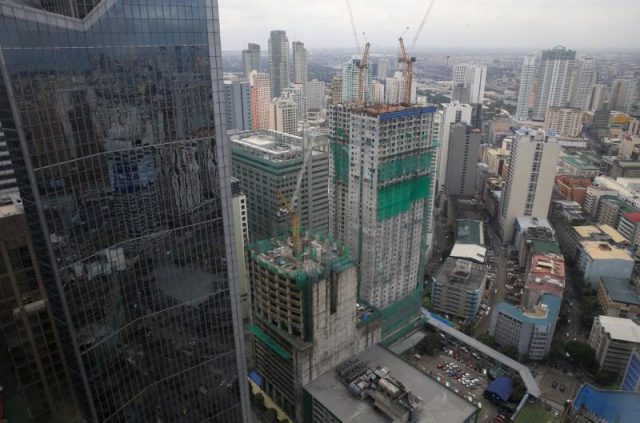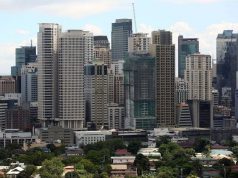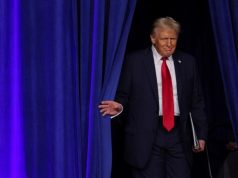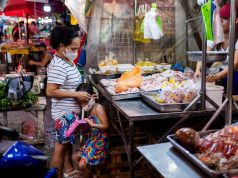MANILA, Philippines — (UPDATE 2 – 12:59 p.m.) Finance Secretary Carlos Dominguez III predicted a “more riveting growth narrative” in the fourth quarter and beyond as the Duterte administration ramps up spending on infrastructure projects.
Dominguez’s forecast was in reaction to the Philippine Statistics Authority’s announcement Thursday, November 16, that the economy clocked a solid 6.9 percent growth in the third quarter, topping forecasts and expanding at its fastest pace in a year, supported by strong industrial output and services.
This picked up from the upwardly revised 6.7 percent pace in the second quarter and was above the 6.5 percent forecast in a Reuters poll.
“Notwithstanding the continued political noise and the terrorist activity in Marawi, which President Duterte had decisively addressed, the economy managed to perform well in the third quarter as the government posted a double-digit increase in public investments and pursued initiatives to further improve fiscal health and boost investor sentiment,” Dominguez said.
“Expect a more riveting growth narrative in the fourth quarter and onwards as the Duterte administration shifts to higher gear its unparalleled investment and stimulus program on the strength of the government’s greater absorptive capacity and its resolve to advance its ‘Build, Build, Build’ infra program as the main driver of the economy,” he added.
Dominguez was optimistic the domestic economy is on track to meet the official full-year expansion target of 6.5-7.5 percent as the government accelerates spending on infrastructure, which he said has the highest multiplier effect on growth, and on human capital formation, which is “essential to achieving economic inclusion for all Filipinos.”
But in a separate statement, Ifugao Representative Teddy Baguilat Jr. said the positive growth figures would mean nothing if not felt by Filipinos, especially the poor.
“The question is what kind of growth are we talking about? Poverty and unemployment figures are still high and getting worse. Inflation remains high as the peso continues to devalue,” he said.”Unless government starts to fulfill its social reform promises (which it has not), then the reported economic growth is just a bunch of figures that has really no impact on the lives of the Filipinos.”
Akbayan Representative Tom Villarin said “cconomic growth is just a single indicator of the economy not a holistic one” and would be unsustainable “without democracy and respect for human rights.”
“When we curtail political dissent and destroy democratic institutions, such economic growth will fail in the long run,” he said. “With creeping authoritarian rule, this growth will fall together with this regime that promotes mass murder.”
“A rise in economic output does not mean it translates to having a positive impact to the overall socioeconomic welfare of society,” he added. “While it will have a boost to the market, government has not addressed issues on inequality, unemployment, lack of livelihoods, and rising inflation that hits the poor most.”
Dominguez said he believes Malacañang will be able to “maintain fiscal discipline” despite the escalated public spending for the Build, build, build programs. He also expects Congress to pass within the year the Tax Reform for Acceleration and Inclusion Act (TRAIN) bill, which government says will boost revenues because of the increase in excise fuel tax.
“There are such positive benchmarks as the record Gross International Reserve level, manageable debt service and formidable earnings from the OFW (overseas Filipino workers) and BPO (business process outsourcing) sectors that would likewise help the government sustain its economic stimulus plan into the medium term,” Dominguez said.
Secretary Ernesto Pernia, head of the National Economic and Development Authority, said the Philippines’ third quarter gross domestic product performance was higher than economists’ forecasts of 6.5 to 6.7 percent.
Compared to other Asian countries, the Philippines remains one of the region’s best performing economies, second to Vietnam which reported a 7.5 percent growth in the third quarter, and higher than China’s 6.8 percent and Indonesia’s 5.1 percent for the same period.
But challenges remain, such as a weak peso at a near 11-year low and potential risk from any delay in President Rodrigo Duterte’s ambitious infrastructure overhaul.
Growth on a quarterly basis, however, cooled at 1.3 percent compared with the previous quarter’s upwardly revised 2.0 percent and slower than the 1.6 percent forecast in a Reuters poll.
Like its peers in Asia, the Philippines is benefiting from the steady rebound in exports, which were up 12.2 percent in the nine months to September.
Higher agricultural output, thanks to good weather, also helped prop up the economy.
WATCH NEWS5’S VIDEO REPORT:










